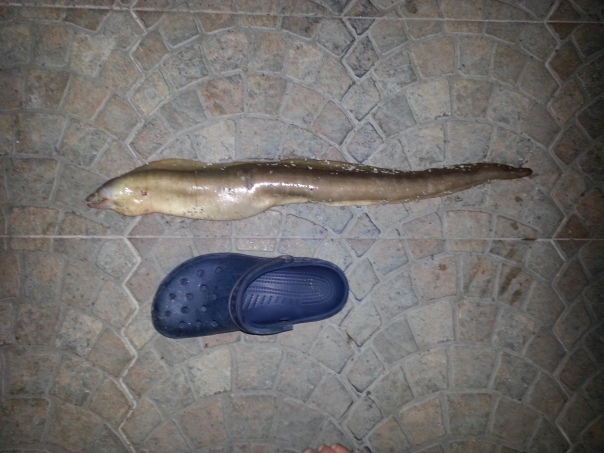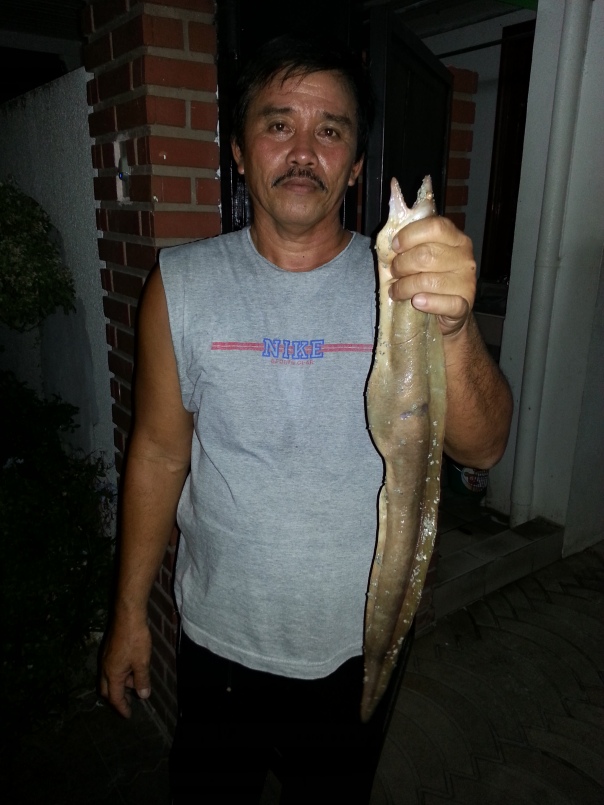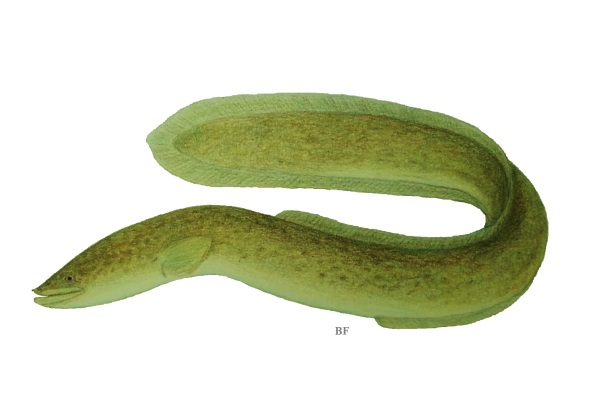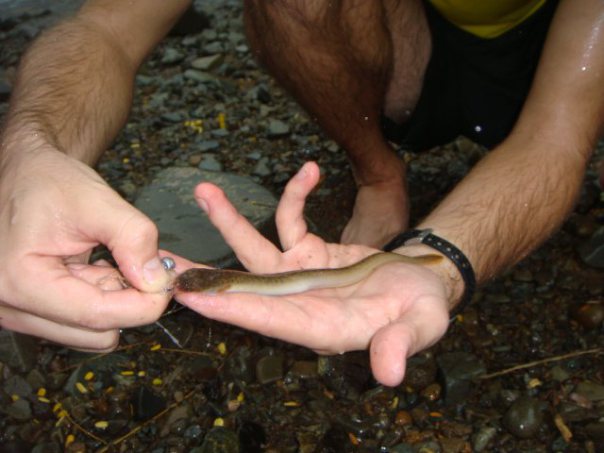Category Archives: Eel (Igat)
Indong Eel
Most bait fishermen here in the Philippines have experienced catching a slimy, squirming eel of some kind. This particular eel is in called Indong in Cebuano and is shorter and stockier in length than some others. Small eels of this and other species are called Bacasi here in the Visayas.
Eels are most often caught at night on a variety of bait. Usually something smelly attracts them and they often gobble the bait down whole. Anglers fishing for other species of fish are often annoyed at catching eels because they twist their slimy bodies in a attempt to escape. This action is however often caused the line and leader to twist and wrap tightly around the eels body. It is not uncommon for the eel to strangle itself this way on the line. Anglers usually have to cut off their leaders when they catch an eel that tangles their line.
Eels are generally considered good eating. This particular species is desired because of its thick flesh which contains fewer bones than some other eel species. Some local Cebuano dishes for Indong include; Sugbaonon (Grilled), Inun-unan (vinegar/ginger based dish) and Larang (another sour soup dish).
Vencio holding an Indong
An Eel Surf Fishing
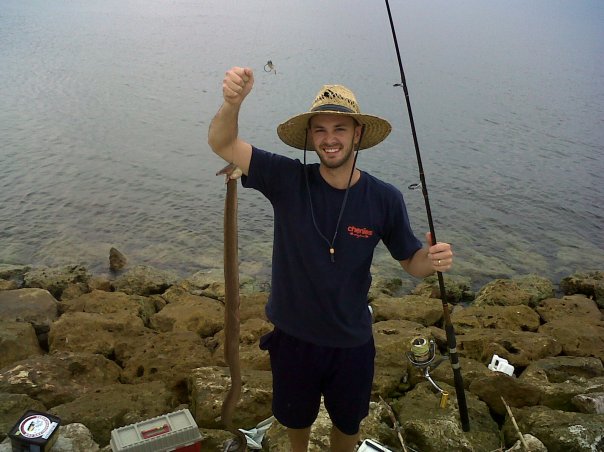 Here is an eel I caught surf fishing recently that I have not yet identified. It is known locally here in Cebu as Ubod, though smaller ones are called Bakasi. I caught this 4 footer on a piece of squid while fishing on the bottom with a paternoster rig. These are quite common down here and can grow up to 6 ft plus.
Here is an eel I caught surf fishing recently that I have not yet identified. It is known locally here in Cebu as Ubod, though smaller ones are called Bakasi. I caught this 4 footer on a piece of squid while fishing on the bottom with a paternoster rig. These are quite common down here and can grow up to 6 ft plus.
Fishing Typhoon Pedring
A friend and I fished the Mabacan river as Pedring was leaving the country. The river was high and the water looked like chocolate milk. We fished for eel and catfish on the bottom with large worms. We caught a total of four Native Hito and and five One Spot or Paitan.
My buddy hooked a big Eel (Palos) which we estimated to be around 2-3 kgs, but it broke the line when we had it two feet from shore. Fishing high muddy rivers during the end of rains seems good for eels and catfish. They must leave their holes and rocks in search of food.
Here are a couple of the hito we caught:
Giant Mottled Eel ( Anguilla marmorata )
Common Name: Freshwater Eel,
Local Name: Igat, Palos (Tagalog), Kasili (Cebuano)
Max Size: 200 cm (20.5 kgs)
Biodiversity: Marine, Brackish, Freshwater
Depth: 1 – 400 m
Fishing Season: All Year Long
Minimum Size Limit: None
Recommended Bait: Shrimp, Worms, Crabs, Fish, Frogs;
IUCN Red List Status: Least Concern (LC)
Eels are one of the most elusive and difficult to catch fish in fresh water in the Philippines. We consider freshwater eels to be one of the prize fish to catch in freshwater. The freshwater species are quite unlike their saltwater relatives which are numerous and often considered pests. Freshwater eels feed mainly at night or during storms when rivers flood and are muddy. This particular species reaches an impressive size of up to 20 kilos which makes them true river monsters. Large eels can live in small rivers and streams often in places where they are least expected. During the day the eels rest in deep holes and under rocks. At night they leave the safety of their hiding places to feed.
Freshwater eels possess another unique characteristic that makes them quite amazing. They live most of their lives in freshwater, however the migrates to the depths of the ocean to spawn. Once they have spawned they return to the freshwater and the baby eels known as elvers follow.
Try fishing for eels at night or when the river is high and muddy with large earthworms, frogs or fish.
